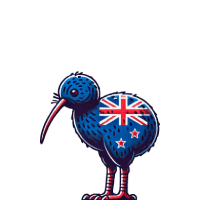The exact appearance of parasitoid wasps depends on the species. Most are extremely small (1 to 10 mm) and have brown or black bodies with long, thin antennae. However, some species belonging to the family Ichneumonidae can be over 10 cm (4 inches) long and have a very long ovipositor…
Featured Post
Taxonomy and Species Diversity
Taxonomy of the Parasitoid wasps of New Zealand
New Zealand, known for its unique biodiversity, is home to many endemic species, including parasitoid wasps. These insects play a…
Variety of wasps
Parasitoid wasps seem to be more diverse than expected. Beetles have long been the “official” insect order with the largest…
Predators and parasites
To most people, parasitic wasps are invisible. Their life cycle is quite remarkable, but they remain almost unknown outside the…
Evolutionary Adaptations of Parasitoid wasps of New Zealand
New Zealand, with its unique flora and fauna, is an interesting site for studying evolutionary processes occurring in isolated ecosystems.…
Blog
Predators and parasites
To most people, parasitic wasps are invisible. Their life cycle is quite remarkable, but they remain almost unknown outside the world of Hymenoptera, the entomologists who study wasps, as well […]
Read MoreVariety of wasps
Parasitoid wasps seem to be more diverse than expected. Beetles have long been the “official” insect order with the largest number of species. However, the Hymenoptera (wasps, bees, sawflies and […]
Read MoreLife history and habits
The exact appearance of parasitoid wasps depends on the species. Most are extremely small (1 to 10 mm) and have brown or black bodies with long, thin antennae. However, some […]
Read MoreTaxonomy of the Parasitoid wasps of New Zealand
New Zealand, known for its unique biodiversity, is home to many endemic species, including parasitoid wasps. These insects play a key role in maintaining ecosystems by controlling populations of other […]
Read More






